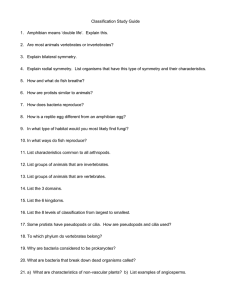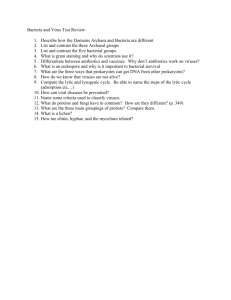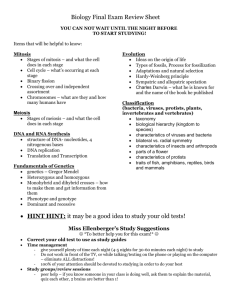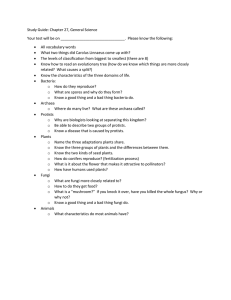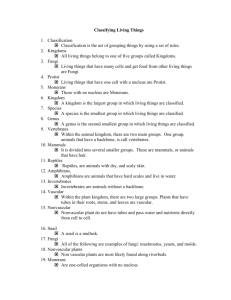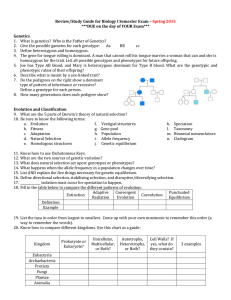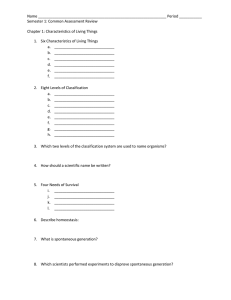6 Kingdoms & Viruses Worksheet: Biology Study Guide
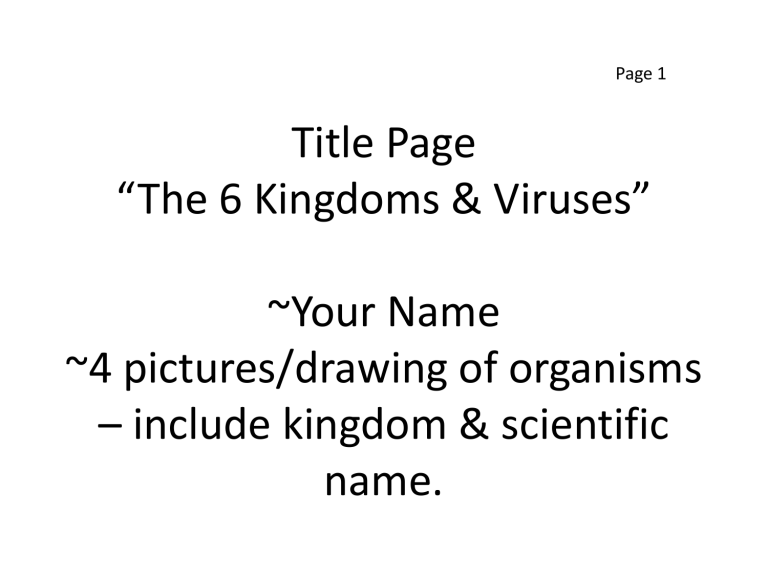
Page 1
Title Page
“The 6 Kingdoms & Viruses”
~Your Name
~4 pictures/drawing of organisms
– include kingdom & scientific name.
Bacteria
Page 2
(both Eubacteria & Archaebacteria)
• Read pages 246-255.
• Provide three (3) general characteristics
• Explain the difference between the two
• Draw diagram of binary fission
• 3 most common shapes (draw & label)
• Provide two (2) examples of how they can be useful and how they can be harmful (role in our world)
• All bacteria is prokaryotic – what does this mean?
Page 3 Protists
• Read pages 270-281
• General characteristics – three (3)
• There are three (3) groups of protists. What are they? What makes them different?
• Give an example of each type. Include both common and scientific name. Provide an illustration of each.
Page 4
Fungi
• Read pages 282 – 289
• Provide three (3) general characteristics
• What are four (4) kinds of fungi? Describe each kind. Give an example of each.
• What is a lichen? Isn’t it 2 organisms? Why do we have a scientist name for it?
Page 5 Animalia
• Read pages 356-369
• General characteristics – three (3)
• What are vertebrate & invertebrates?
• Why are animals considered consumers?
• What are the 7 behaviors discussed in your book? Explain the importance of each.
Animalia-Invertebrates
Page 6
• Read pages 378 - 401
• Invertebrates account for what % of all animals?
• Provide an example of an animal with each of the 3 basic body plans. Draw a picture of each.
• Provide general characteristics &examples of each of the following: Mollusks, arthropods, and echindoerms
Animalia - vertebrates
Page 7
• Read pages 412-418
• Are all vertebrates warm or cold blooded?
What is the difference?
• What are 3 kinds of fish?
Page 8 Plantae
• Read pages 300-320
• Provide general descriptions (4) of this kingdom
• What type of plant is the most common plant on earth?
• Explain the difference between nonvascular and vascular.
Plantae cont …….
Page 9
• Provide general characteristics of seed plants.
• What is gymnosperm? Angiosperm?
• What is the function of (a) roots, (b) stems, (c) leaves, and (d) flowers in seed plants?
Virus
• Read pages 256-259
• Are viruses living?
• Illustrate the 4 basic shapes.
• What is the Lytic Cycle?
• What is a host?
• How do we treat viruses?
Page 10
